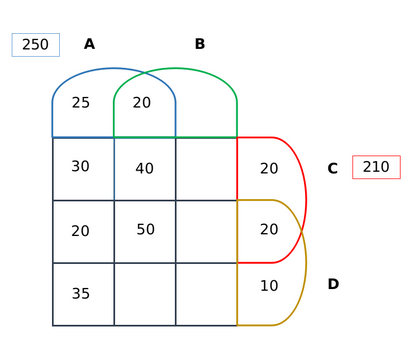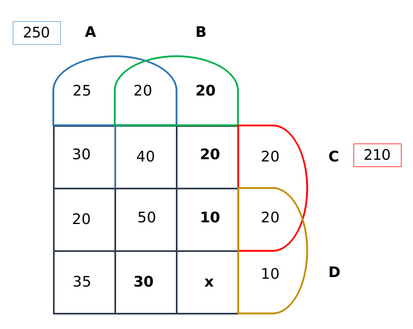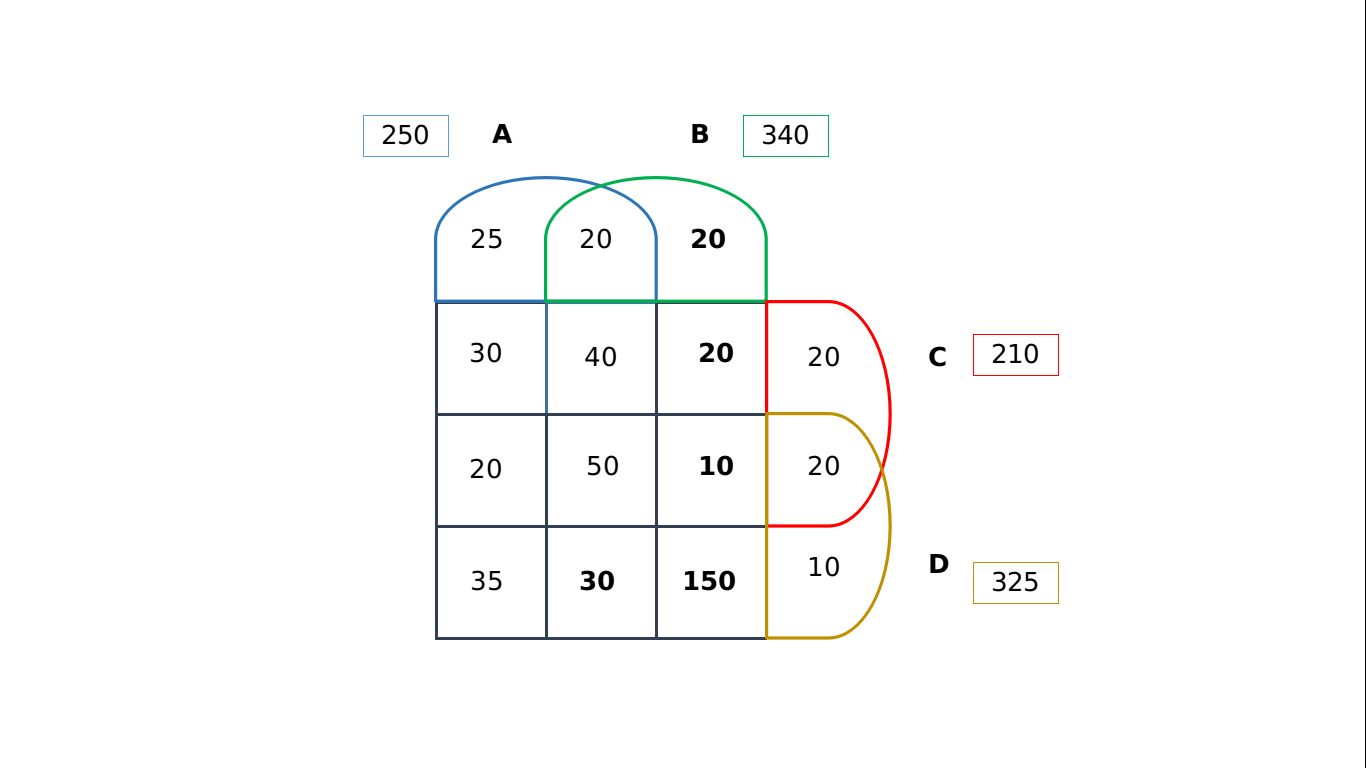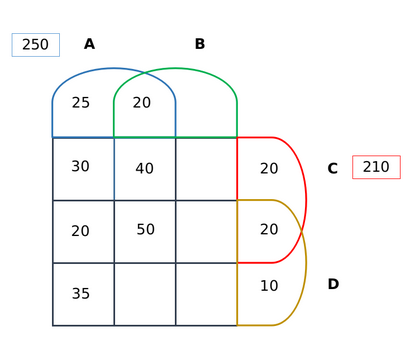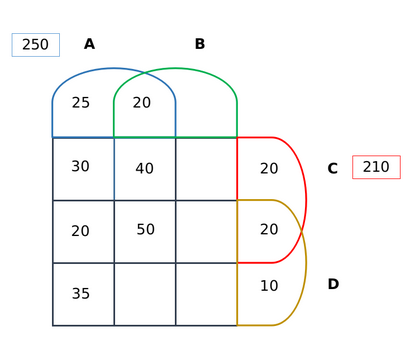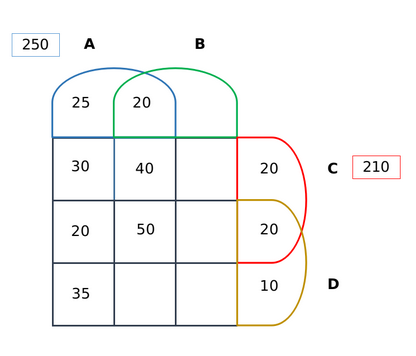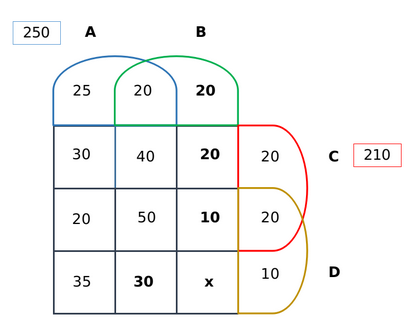CAT 2020 Slot 1 Question Paper
1000 patients currently suffering from a disease were selected to study the effectiveness of treatment of four types of medicines — A, B, C and D. These patients were first randomly assigned into two groups of equal size, called treatment group and control group. The patients in the control group were not treated with any of these medicines; instead they were given a dummy medicine, called placebo, containing only sugar and starch. The following information is known about the patients in the treatment group.
a. A total of 250 patients were treated with type A medicine and a total of 210 patients were treated with type C medicine.
b. 25 patients were treated with type A medicine only. 20 patients were treated with type C medicine only. 10 patients were treated with type D medicine only.
c. 35 patients were treated with type A and type D medicines only. 20 patients were treated with type A and type B medicines only. 30 patients were treated with type A and type C medicines only. 20 patients were treated with type C and type D medicines only.
d. 100 patients were treated with exactly three types of medicines.
e. 40 patients were treated with medicines of types A, B and C, but not with medicines of type D. 20 patients were treated with medicines of types A, C and D, but not with medicines of type B.
f. 50 patients were given all the four types of medicines. 75 patients were treated with exactly one type of medicine.
CAT 2020 Slot 1 - Question 41
How many patients were treated with medicine type B?
789
456
123
0.-
Clear All
CAT 2020 Slot 1 - Question 42
The number of patients who were treated with medicine types B, C and D, but not type A was:
789
456
123
0.-
Clear All
CAT 2020 Slot 1 - Question 43
How many patients were treated with medicine types B and D only?
789
456
123
0.-
Clear All
CAT 2020 Slot 1 - Question 44
The number of patients who were treated with medicine type D was:
789
456
123
0.-
Clear All
Four institutes, A, B, C, and D, had contracts with four vendors W, X, Y, and Z during the ten calendar years from 2010 to 2019. The contracts were either multi-year contracts running for several consecutive years or single-year contracts. No institute had more than one contract with the same vendor. However, in a calendar year, an institute may have had contracts with multiple vendors, and a vendor may have had contracts with multiple institutes. It is known that over the decade, the institutes each got into two contracts with two of these vendors, and each vendor got into two contracts with two of these institutes.
The following facts are also known about these contracts.
I. Vendor Z had at least one contract in every year.
II. Vendor X had one or more contracts in every year up to 2015, but no contract in any year after that.
III. Vendor Y had contracts in 2010 and 2019. Vendor W had contracts only in 2012.
IV. There were five contracts in 2012.
V. There were exactly four multi-year contracts. Institute B had a 7-year contract, D had a 4-year contract, and A and C had one 3-year contract each. The other four contracts were single-year contracts.
VI. Institute C had one or more contracts in 2012 but did not have any contract in 2011.
VII. Institutes B and D each had exactly one contract in 2012. Institute D did not have any contract in 2010.
CAT 2020 Slot 1 - Question 45
In which of the following years were there two or more contracts?
CAT 2020 Slot 1 - Question 47
In how many years during this period was there only one contract?
CAT 2020 Slot 1 - Question 48
What BEST can be concluded about the number of contracts in 2010?
CAT 2020 Slot 1 - Question 49
Which institutes had multiple contracts during the same year?
CAT 2020 Slot 1 - Question 50
Which institutes and vendors had more than one contracts in any year?
